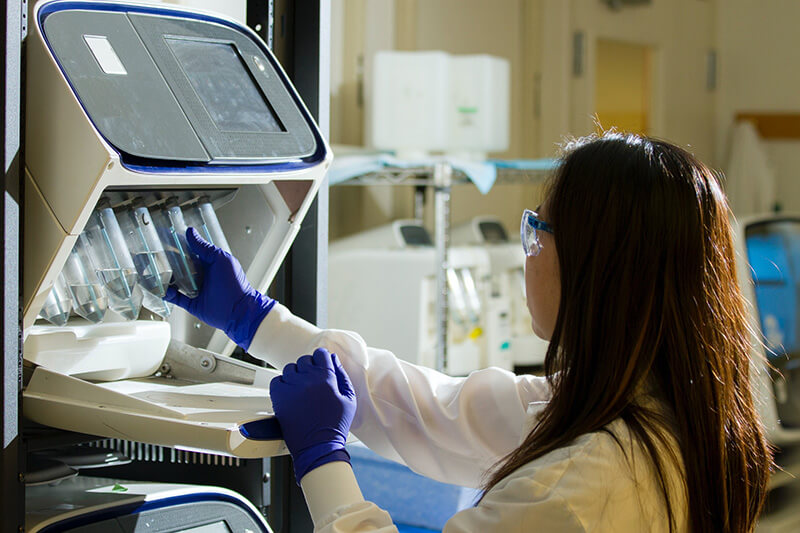With the COVID-19 pandemic dominating both the global news cycle and inter-cultural zeitgeist, it is easy to forget that the last decade has been one of incredible medical advancements.
Artificial organs, including skin and pancreases, have made it possible for victims of burns and organ failure to find options for transplants, while a vaccine was developed in 2016 to combat West Africa’s worst Ebola outbreak since 1976.
Artificial intelligence and medical nano-technology have made great strides, with giant steps occurring in the accuracy of diagnostic imaging and robotic-assisted surgery.
Yet which of the recent changes have the power to propel us into the next decade of scientific discoveries, forever altering the way we practice medicine? From immunotherapy to gene therapy, let’s look at four of the most significant.
Immunotherapy
Immunotherapy has emerged as one of the most widely-recognized breakthroughs of the 2010s, due to its promise in treating cancer, the improvements that researchers have made in the safety and efficacy of this treatment, and the rapid growth in its popularity over the past decade.
Immunotherapy concepts were documented as early as 3000 B.C, in ancient Egypt, with records showing spontaneous tumor regression in patients following a different infection. In 1868, Friedrich Fehleisen and Wilhelm Busch, two German physicians, observed spontaneous tumor regression in patients who also contracted an erysipelas infection.
Although the cost of immunotherapy remains high, the fight toward cancer treatments has progressed significantly thanks to the seemingly simple concept of manipulating and strengthening one’s own immune system to fight disease.
William Bradley Coley, an American cancer researcher now recognized as the ‘Father of Immunotherapy’, was the first to draw inspiration from discoveries before him, intentionally infect bone cancer patients and monitor the results in 1891.
Since 2010, CAR T-cell therapy has been shown to treat up to 70 percent of pediatric leukemia patients, and around 40 percent of lymphoma patients.
Two years ago, Keytruda (a PD-1 inhibitor checkpoint therapy) became one of the world’s highest-selling medications, growing from 55 million in sales in 2014 to 7.2 billion four years later.
Although the cost of immunotherapy remains high, the fight toward cancer treatments has progressed significantly thanks to the seemingly simple concept of manipulating and strengthening one’s own immune system to fight disease.
Single-Pill HIV treatment
Since its formal identification in 1983, the fight against the Human Immunodeficiency Virus (HIV) has made tremendous strides, and certainly deserving of a place as one of the 2010s’ most notable medical advancements.

From 1983 through the 90s, drugs developed to treat HIV stopped working over time. By the late 1990s, combination treatments became the gold standard of HIV care but did require patients to take multiple pills per day to manage their infection, including a range of unsavory side effects.
Due to treatment breakthroughs over the last decade, this is no longer the case. With the release of Dovato in April 2019, all patients, regardless of their history with antiretroviral medication, are now able to manage their infections with no more than 1-2 pills a day.
New HIV treatments are still being developed and approved by the FDA. This July, a new antiretroviral drug called fostemsavir was approved by the FDA.
Fostemsavir provides a treatment option to those who have a multi-drug resistant HIV infection, for whom additional treatment options may be limited.
Telemedicine and IoMT
The COVID-19 pandemic didn’t create the field of telemedicine, but it has definitely accelerated its adoption throughout the health care industry.
Indeed, its growth before the pandemic indicates a massive, long-term shift in the way our culture will administer patient care in the future. The percentage of hospitals using some form of telehealth practice rose from 35 in 2010 to 76 in 2017.
2017 also saw 61 percent of hospitals reported being able to monitor patients remotely, in some capacity.

The Internet of Medical Things (IoMT) works hand-in-hand with virtual appointments to allow for a 100 percent virtual patient visit and monitoring system. IoMT connects medical devices, software systems, and IT networks, allowing providers to monitor patients through smartphone apps, internal devices like pacemakers, and wearable tech.
Additionally, hospitals and care providers who need to be judicious with spending can now monitor stock levels, and order medical supplies with more precision.
IoMT’s value has grown around the world, but especially in the Middle East and North Africa, where the industry is predicted to be worth $9 billion by 2022.
Beyond IoMT and virtual visits, improvements in overall internet and technology access have accelerated the speed at which journals and articles can be shared and accessed by the medical community.
The global collaboration of medical researchers resulting from these advancements will inevitably allow medical professionals to learn faster
Gene therapy
Since the Human Genome Project was completed in 2006, researchers have been able to understand and treat human genetic conditions faster and easier.
2019 is the year when the training wheels come off and the world gets to see what CRISPR can really do for the world in the most positive sense.
A gene-editing technique known as CRISPR (clustered regularly interspaced short palindromic repeats) is arguably the best example of gene modification therapy that has gone from the lab and into human trials over the last decade.
Last year, NPR reported on the beginning of a two-patient CRISPR study by the the University of Pennsylvania in Philadelphia, focusing on cancer treatment.
“2019 is the year when the training wheels come off and the world gets to see what CRISPR can really do for the world in the most positive sense,” Dr. Fyodor Urnov, a gene-editing scientist at the Altius Institute for Biomedical Sciences in Seattle and the University of California, Berkeley, told NPR.
Gene editing is an attractive choice when applicable because of its ability to attack genetic diseases directly at their source.
However, risks associated with gene treatment therapy are serious, and media coverage surrounding gene therapy failures has prevented public opinion from rallying around CRISPR technology as quickly as other treatments.
Ethical cautions surrounding gene editing have also played a role in the field’s advancements, best highlighted by a Chinese scientist’s claim last year, that he had used CRISPR ‘to create genetically modified babies.’
Looking Ahead to the 2020s
In the upcoming decade, these above discoveries and advancements will build upon each other to continue to change the health care industry.
The 2020s will likely hold a medical landscape far more innovative, efficient, and accurate than what we could envision today.
Eventually, we may see immunotherapy establish itself as the leading treatment for some cancers, while a cure for HIV begins to peek over the horizon. Telemedicine and IoMT will accelerate innovation even further by allowing providers to collaborate faster and more often, and gene therapy will become more refined.
The 2020s will likely hold a medical landscape far more innovative, efficient, and accurate than what we could envision today.
The COVID-19 vaccine, along with further advancements in mental health therapies, and a true unleashing the power of AI in surgeries, cancer treatments, and diagnoses will all undoubtedly appear on the next decade’s list of most important breakthroughs.



